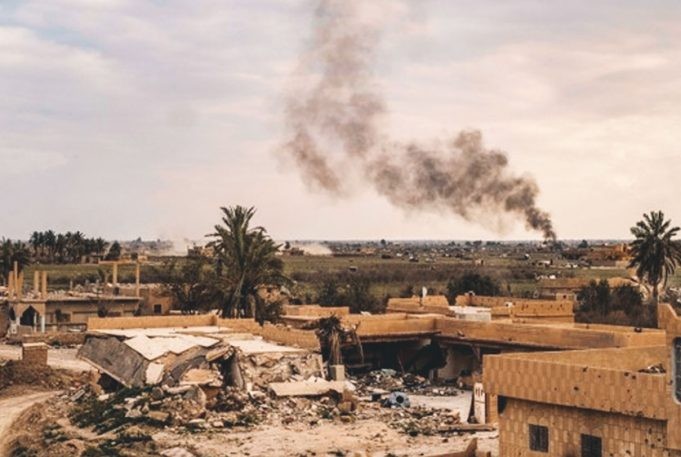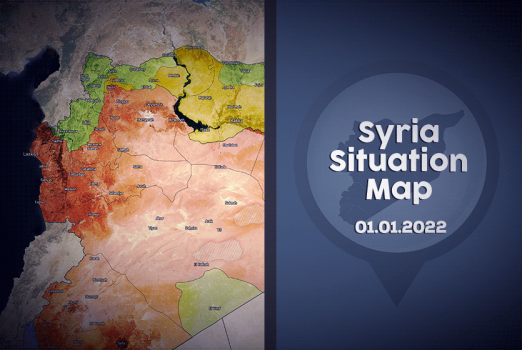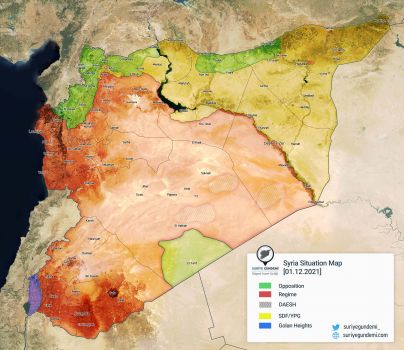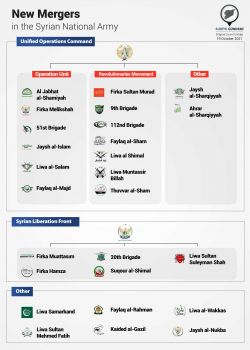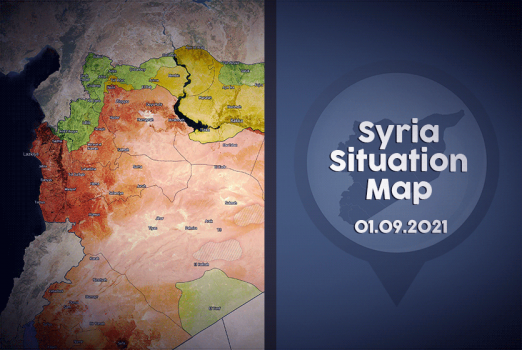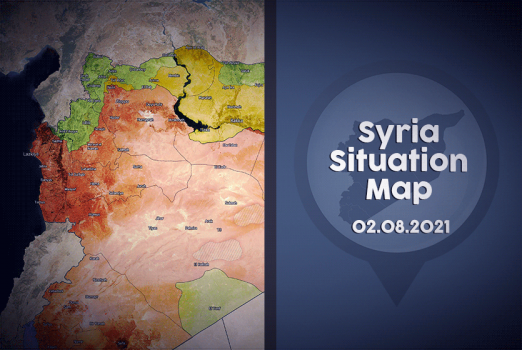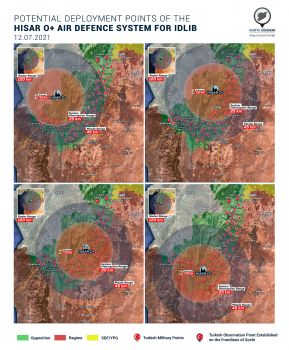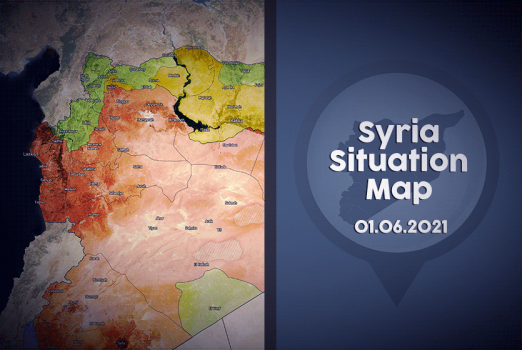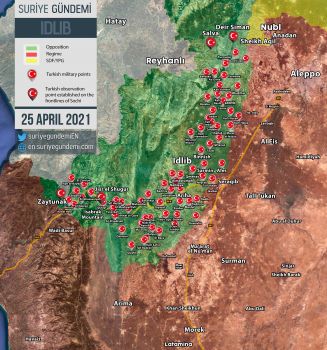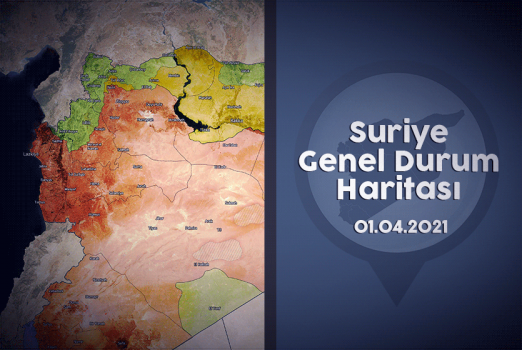Once Daesh was once had population of 10 million people within its borders. It stretched across two countries Iraq and Syria contained major towns and cities, oil fields and factories. But now Daesh has lost more than 99 percent of the territory it once held in Syria and Iraq its territory has now shrunk to a tiny pocket in Syria’s eastern Deir Ezzor province, with its fighters holed up in the village of Baghouz near the Iraqi border[1]. There is a perception growing among the people that these are the end days of Daesh but many analysts and US intelligence community warns that the group will still be a long-term threat. While the physically held territory is about to extinguish the extremist group still has thousands of fighters in its ranks in Iraq, Syria and beyond[2]. Daesh has largely melted away from towns and villages in the conflict zone rather than confront advancing Iraqi and Syrian forces[3]. Even no significant top leader of Daesh has been captured or killed in recent offensives it means that Daesh top leaders and strategists have left the contested areas and are preparing for next phase of war.
Daesh’s roots can be found in the Iraqi insurgency against the US led invasion of Iraq in 2003 when the founding leaders of Daesh were waging an insurgency campaign against coalition forces in Iraq. Even with the fewer resources at disposal now Daesh will be a deadly insurgent group as it takes much less resources to carry out terrorist/insurgent attacks rather than defending a territory. Daesh was planning for a long-term insurgent campaign from at least couple of years now especially after losing Mosul. After the fall of Mosul, the group adopted a calculated strategy of withdrawing to conserve manpower and pivot away from holding territory to pursuing an all-out insurgency in coming future[4]. The reality is that since losing Mosul, its most sizeable and symbolic territorial possession, the Daesh has not fought to the last man and last bullet to maintain control of any other population centre. Even more surprising was its retreat in areas long believed to be its strategic base the borderlands of Iraq, Syria and especially in the Euphrates river valley, where it had experience fighting or operating in for around a decade now and where it remerged powerfully in 2014[5]. The group has shifted its base to desert and rural areas as rural- and desert-based insurgency is no less important than urban warfare to deplete its enemies, recruit members, and lay the groundwork for a comeback[6].
The extremists have already stepped up hit-and-run attacks in towns they have lost. This tactic diverged from the group’s tendency at the height of its expansion in 2014 to engage in conventional attacks, including attacks via convoys and heavy artillery barrage. The new tactics tended to involve small units attacking from behind enemy lines or through hasty raids. Reverting back to the old insurgency and terror tactics enabled the Daesh to penetrate otherwise well-secured areas[7]. Previous attempts to attack through conventional fighting units had failed, even while the group was at the height of its power. These hit-and-run attacks also serve another very useful purpose that they are able to demonstrate that nothing is out of reach for them, even after their ability to control territory plummets. In this regard it should be noted that Daesh is an adaptive and determined enemy. Its new avatar from an organization with a fixed headquarters to a clandestine terrorist network dispersed throughout the region and the globe will be deadlier. The result of this transition will be that Daesh perpetrated violence should be far less concentrated and more dispersed which will be hard to detect and control[8].Part of the revised Daesh strategy will likely include a rejuvenated focus on planning and conducting spectacular attacks in the West in order to remain militarily relevant and to inspire its followers globally[9]. To adequately plan for the next phase of the war it is critical that the coalition forces fighting against Daesh understands the variety of potential tactics undertaken by the group. This is the need of the hour that a new strategy to counter Daesh should be formulated rather than hasty announcement of group defeat. For fighting highly adaptive adversaries like Daesh a new approach should have different mix of tools including military, intelligence, diplomatic, social and economic means. Moreover, Daesh toxic ideology can still affect an entire generation so next campaign against Daesh should also focus on ideologically eradicating it. An ideological defeat is a much tougher task because anti-extremism campaigns requires patience and resilience but these measures offer long term solution as they tackle the root causes of the radical ideologies[10]. United States and allies have to understand that ideological defeat of Daesh is as important as its military defeat and only one phase of war is over and next one is about to come.
Daesh’s roots can be found in the Iraqi insurgency against the US led invasion of Iraq in 2003 when the founding leaders of Daesh were waging an insurgency campaign against coalition forces in Iraq. Even with the fewer resources at disposal now Daesh will be a deadly insurgent group as it takes much less resources to carry out terrorist/insurgent attacks rather than defending a territory. Daesh was planning for a long-term insurgent campaign from at least couple of years now especially after losing Mosul. After the fall of Mosul, the group adopted a calculated strategy of withdrawing to conserve manpower and pivot away from holding territory to pursuing an all-out insurgency in coming future. The reality is that since losing Mosul, its most sizeable and symbolic territorial possession, the Daesh has not fought to the last man and last bullet to maintain control of any other population centre. Even more surprising was its retreat in areas long believed to be its strategic base the borderlands of Iraq, Syria and especially in the Euphrates river valley, where it had experience fighting or operating in for around a decade now and where it remerged powerfully in 2014. The group has shifted its base to desert and rural areas as rural- and desert-based insurgency is no less important than urban warfare to deplete its enemies, recruit members, and lay the groundwork for a comeback.
The extremists have already stepped up hit-and-run attacks in towns they have lost. This tactic diverged from the group’s tendency at the height of its expansion in 2014 to engage in conventional attacks, including attacks via convoys and heavy artillery barrage. The new tactics tended to involve small units attacking from behind enemy lines or through hasty raids. Reverting back to the old insurgency and terror tactics enabled the Daesh to penetrate otherwise well-secured areas. Previous attempts to attack through conventional fighting units had failed, even while the group was at the height of its power. These hit-and-run attacks also serve another very useful purpose that they are able to demonstrate that nothing is out of reach for them, even after their ability to control territory plummets. In this regard it should be noted that Daesh is an adaptive and determined enemy. Its new avatar from an organization with a fixed headquarters to a clandestine terrorist network dispersed throughout the region and the globe will be deadlier. The result of this transition will be that Daesh perpetrated violence should be far less concentrated and more dispersed which will be hard to detect and control.
Part of the revised Daesh strategy will likely include a rejuvenated focus on planning and conducting spectacular attacks in the West in order to remain militarily relevant and to inspire its followers globally. To adequately plan for the next phase of the war it is critical that the coalition forces fighting against Daesh understands the variety of potential tactics undertaken by the group. This is the need of the hour that a new strategy to counter Daesh should be formulated rather than hasty announcement of group defeat. For fighting highly adaptive adversaries like Daesh a new approach should have different mix of tools including military, intelligence, diplomatic, social and economic means. Moreover, Daesh toxic ideology can still affect an entire generation so next campaign against Daesh should also focus on ideologically eradicating it. An ideological defeat is a much tougher task because anti-extremism campaigns requires patience and resilience but these measures offer long term solution as they tackle the root causes of the radical ideologies. United States and allies have to understand that ideological defeat of Daesh is as important as its military defeat and only one phase of war is over and next one is about to come.
Sources
1‘We will finish them soon’
https://www.independent.co.uk/news/world/middle-east/isis-syria-defeat-islamic-state-end-caliphate-sdf-kurds-a8757991.html
2 What next for IS?
https://www.bbc.com/news/world-middle-east-45547595
3 Insurgents Again: The Islamic State’s Calculated Reversion to Attrition in the Syria-Iraq Border Region and Beyond
https://ctc.usma.edu/insurgents-again-the-islamic-states-calculated-reversion-to-attrition-in-the-syria-iraq-border-region-and-beyond/
4 How ISIS Survives the Fall of Mosul
https://www.theatlantic.com/international/archive/2017/07/mosul-isis-propaganda/532533/
5 ISIS Could Rise Again
https://www.foreignaffairs.com/articles/syria/2017-12-15/isis-could-rise-again
6 Officials Eye Euphrates River Valley as Last Stand for ISIS https://www.nytimes.com/2017/08/31/us/politics/isis-military-us-iraq-syria-euphrates.html6
7 Insurgents Again: The Islamic State’s Calculated Reversion to Attrition in the Syria-Iraq Border Region and Beyond
https://ctc.usma.edu/insurgents-again-the-islamic-states-calculated-reversion-to-attrition-in-the-syria-iraq-border-region-and-beyond/
8 Insurgents Again: The Islamic State’s Calculated Reversion to Attrition in the Syria-Iraq Border Region and Beyond
https://ctc.usma.edu/insurgents-again-the-islamic-states-calculated-reversion-to-attrition-in-the-syria-iraq-border-region-and-beyond/
9 How ISIS Is Transforming
https://www.foreignaffairs.com/articles/middle-east/2017-09-25/how-isis-transforming
10 Defeating ISIS and Al-Qaeda on the Ideological Battlefield
https://digital-commons.usnwc.edu/cgi/viewcontent.cgi?referer=https://www.google.com.au/&httpsredir=1&article=1015&context=ciwag-case-studies

